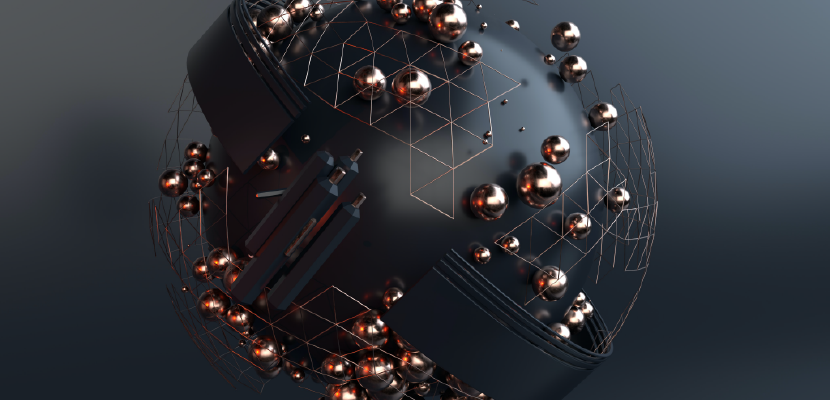
Whether it is your first time hearing the term or if you are familiar with it, it is perfectly normal to have questions about such a big subject, we have all been there. In this article, we will make sure to answer the most popular questions about render farms.
1. What Is A Render Farm?
A render farm is a group of connected computers that work together to render 3D projects more rapidly and effectively than a single computer. A render farm's computers collaborate to divide the rendering task, allowing projects to be finished more quickly. In order to produce high-quality visual effects and animations, render farms are frequently used in the film, architecture, and video game industries. If you want a more detailed answer to this question, read our article about what render farms are and how they work.
2. How Fast Are Render Farms?
The quantity and power of the machines in the render farm, the difficulty of the rendering task, and the software being used are some of the variables that affect how quickly a rendering gets done. A render farm can be 10 or even 100 times faster than a personal computer, depending on the aforementioned factors.
3. How Much Time Can You Save With A Render Farm?
Using a render farm can save a lot of time, possibly cutting down the rendering process from days or weeks to hours or minutes. The larger the farm, the more time can be saved.
Let's take a look at an example of a 1-minute animation: One second of the animation needs about 25 frames for a fluid movement. So the full 1-minute sequence has a total of 1.500 frames. We will calculate with an average rendering time of 10 minutes per frame, while this time can easily go up to 30 minutes per frame, if you have a high-quality scene with elaborate lighting calculations. So, with this example, your local computer system, running at full capacity, will need 10 full days to calculate the 1.500 frames of your 1-minute sequence.
That is when a render farm comes in handy. If this sequence is calculated by one hundred render nodes instead of just one local system, 10 days of rendering shrink to 2.5 hours. Additionally, your computer will not be blocked for 10 days.
4. What Types Of Render Farms Exist?
There are a few different types of render farms that are commonly used in the industry:
- On-Premises Render Farms: These are render farms that are set up and maintained within a company's own facilities. They typically consist of a cluster of high-performance machines that are connected to a central network.
- Cloud-Based Render Farms: These are render farms that are hosted by a third-party provider and accessed over the internet. They allow users to rent access to a large number of machines for rendering and only pay for the resources they use. Licenses for all kinds of software are already installed on the machines. An example of such a render farm is RebusFarm.
- Hybrid Render Farms: These are a combination of on-premises and cloud-based render farms, where some machines are located on-premises and some are hosted by a third-party provider in the cloud. This allows for more flexibility in terms of resources and costs.
- Peer-to-Peer Render Farms: This type of render farm allows individual users to share their unused computing power to help others with their rendering. It doesn't require the purchase of expensive hardware, but here security restrictions may arise.
- GPU Render Farms: These are render farms that are optimized for GPU rendering, which can be faster and more efficient than CPU rendering. They are used in industries like VFX, Animation, Architecture, and Gaming.
- Software-Specific Render Farms: These are render farms that are designed to work with one specific rendering software, such as V-Ray, Arnold, Octane, or Redshift.
5. Why Do You Need A Render Farm?
A render farm is necessary for several reasons, including:
- Speed: Rendering high-resolution, complex scenes can take a long time on a single machine, but with a render farm, the workload can be distributed among multiple machines, significantly reducing the time it takes to complete a render.
- Scalability: You’ll be able to render large and complex scenes that would be impossible to render on a single machine. It allows for the increase of the number of machines in the render farm as the need for more resources arises, making it easy to scale up or down as needed.
- Access to High-Performance Hardware: A render farm typically consists of high-performance machines with powerful CPUs and GPUs, which are necessary for rendering high-quality images.
- Improved Efficiency: A render farm allows multiple users to access and use the same resources simultaneously, improving the overall efficiency of the rendering process.
- Cost-Effective: Since you’re sharing resources, this will reduce the need for individual users to purchase expensive hardware. It also allows for the ability to rent resources, which is more cost-effective than buying and maintaining hardware.
- High Availability: A render farm allows the rendering to happen even when one or more machines are down, as the workload is distributed among all the machines in a farm. This makes it much more reliable than a single machine. And a render farm is accessible 24/7 and from anywhere in the world.
6. How Does A Render Farm Work?
- Online Render Farm: An online render farm is a cloud-based service that allows users to access a remote cluster of machines for rendering via the internet. The artist or designer sets up the scene in the 3D software, uploads it to the online farm, and the farm manager distributes the rendering tasks to the nodes. Some render farms like RebusFarm offer a plugin that allows users to submit their projects from their own 3D software. Once the project is on the render farm the machines work on the divided tasks simultaneously, and the final output, such as an image or animation, is assembled and delivered to the artist on their local computer. The main difference from a traditional render farm is that the artist or designer does not need to be physically present and can access the service remotely.
- Rented Computers In The Cloud: Renting computers in the cloud, also known as IaaS, is a service that allows users to access and use remote computers or servers over the internet. Users sign up with a cloud provider, configure the rented machines, access them remotely, use them for various tasks, and pay based on the resources used. This service allows scalability, flexibility, and accessibility, but there are also some things that should be considered. These include potential security risks, reliability of internet connectivity, the time to set up and configure the machines on one’s own, and potential vendor lock-in. Additionally, costs can also increase if the user underestimates the resource usage or if there are any unexpected spikes in usage.
7. How Does The Render Farm Pricing Work?
Render farm pricing typically works in one of these two ways:
- Per-minute or Per-hour: In this pricing model, the user is charged based on the amount of time their tasks are running on the render farm. This can be useful for users who need to render a few frames or have a small project.
- Per-core or Per-machine: In this pricing model, the user is charged based on the number of cores or machines that are being used. This can be useful for users who have a larger project or need to render many frames.
Some render farm providers also offer a combination of these two pricing models, or charge based on a combination of time and resources.
Additionally, some providers offer different pricing plans that vary depending on the number of cores, amount of storage, or other resources. Some even offer a pay-as-you-go plan, where you pay only for the amount of rendering you do, and others offer monthly or yearly subscription plans with a fixed number of hours or cores.
It's important to compare prices and features from different providers to find the most cost-effective option for your needs. Some providers have a fixed cost that does not change depending on the amount of time used, but others have a variable cost that depends on the number of resources used.
8. Which Render Farm Is The Best?
Here are the top 5 render farms that provide you with fast and reliable rendering. For more details on each render farm's features, read our article about the top 5 render farms in 2023.
- RebusFarm
- GarageFarm
- Ranch Computing
- Fox Renderfarm
- iRender
9. Which Is The Best Render Farm For CPU-Rendering?
A CPU render engine, also known as a Central Processing Unit, is the control center of a computer and its main task is to convert data input into information output. As one of the first renderers available, CPU rendering is widely used and is considered the industry standard. According to recent research and reviews, some of the top render farms for CPU rendering in 2023 include the support of a variety of rendering engines and 3D software packages, a user-friendly interface for managing and monitoring render jobs, and a pay-per-use pricing model. These render farms are:
- RebusFarm
- GarageFarm
- Fox Renderfarm
10. Which Is The Best Render Farm For GPU Rendering?
GPU rendering has become more and more popular in the past years. With this process, the rendering is done on graphics processing units. The GPUs have a huge amount of small cores, that compute the data simultaneously, which allows the GPU to calculate huge amounts of data very fast. Most render farms nowadays offer CPU and GPU rendering. Below we list the top GPU render farms, that have a wide range of GPU resources, a pay-per-use pricing model, and a user-friendly interface for managing and monitoring the render jobs.
- RebusFarm
- Fox Renderfarm
- Ranch Computing
If all your questions about render farms are answered, get started with your own renderings. Make use of a free trial and start boosting your 3D career. If you still have questions, feel free to contact our support team via phone, chat or e-mail, they will be glad to answer all your questions about how a render farm works and to get started with it.

About the author
Nicole Holt is an experienced 3D enthusiast with a career in marketing and content writing. Thanks to this unique combination, she is able to showcase the technical intricacies of 3D art and rendering while also making the subject accessible to a wide audience. When she's not immersed in the digital world, Nicole can be found in the great outdoors, most likely with her beloved dog, Sammy.
